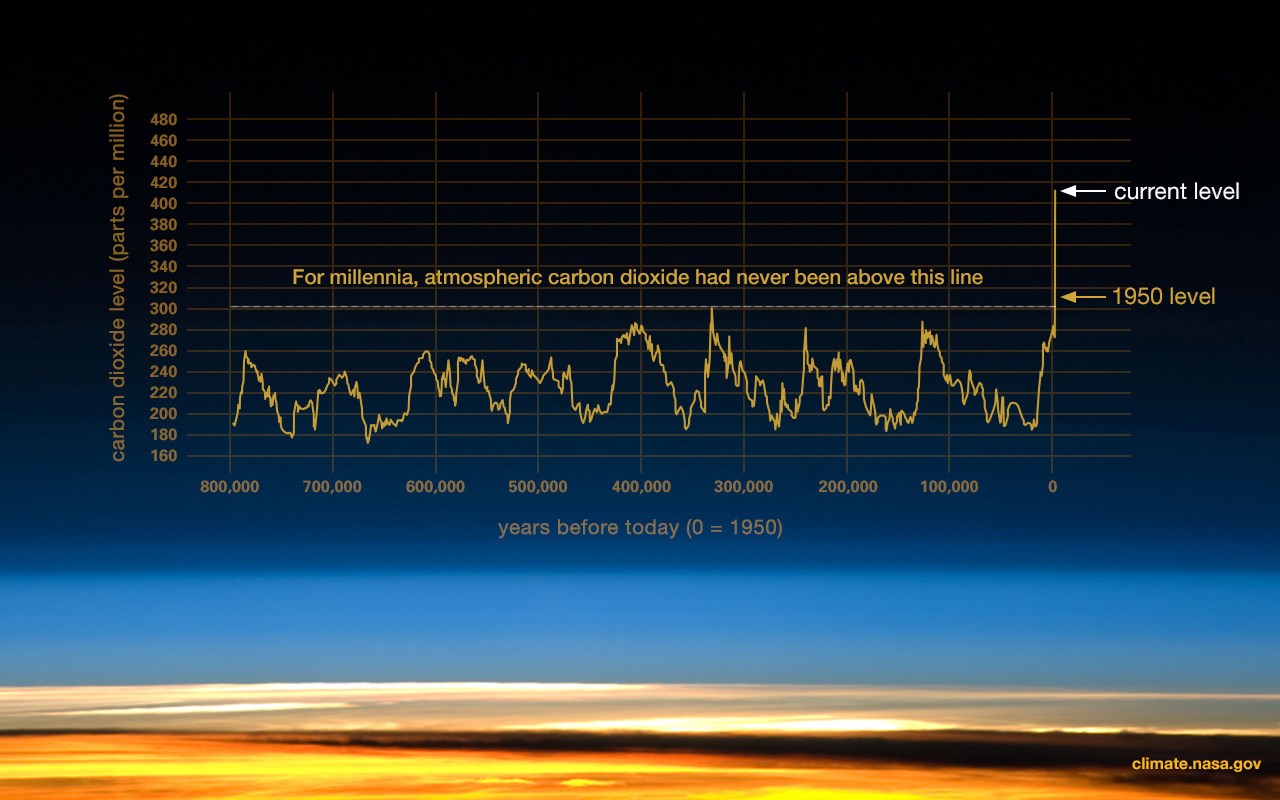
In 2007, the Intergovernmental Panel on Climate Change (IPCC) issued its Fourth Assessment Report, which indicated that the concentration of carbon dioxide and methane in the atmosphere in the year 2005 far exceeded the normal range over the last 650,000 years and concluded that global warming is unequivocally happening. Glaciers and snow packs are melting, stream temperatures are going up, coastal erosion is increasing, and changes in weather patterns are leading to drought and heat waves both locally and regionally. The Fourth Assessment Report not only stated unambiguously that global warming is happening, but it also declared that it is very likely that most of the warming observed since the mid-20th century (i.e., mid-1900s) is caused by human emissions of greenhouse gasses. In 2013 and 2014, the IPCC issued its Fifth Assessment Report, which stated that: Human influence on the climate system is clear, and recent anthropogenic emissions of greenhouse gases are the highest in history. Recent climate changes have had widespread impacts on human and natural systems. and Warming of the climate system is unequivocal, and since the 1950s, many of the observed changes are unprecedented over decades to millennia. The atmosphere and ocean have warmed, the amounts of snow and ice have diminished, and sea level has risen. and Anthropogenic greenhouse gas emissions have increased since the pre-industrial era, driven largely by economic and population growth, and are now higher than ever. This has led to atmospheric concentrations of carbon dioxide, methane and nitrous oxide that are unprecedented in at least the last 800,000 years. Their effects, together with those of other anthropogenic drivers, have been detected throughout the climate system and are extremely likely to have been the dominant cause of the observed warming since the mid-20th century. In 2021, the IPCC issued its Sixth Assessment Report's Working Group I Report entitled "Climate Change 2021: The Physical Science Basis," according to which: It is unequivocal that human influence has warmed the atmosphere, ocean and land. Widespread and rapid changes in the atmosphere, ocean, cryosphere and biosphere have occurred. and The scale of recent changes across the climate system as a whole and the present state of many aspects of the climate system are unprecedented over many centuries to many thousands of years. and Human-induced climate change is already affecting many weather and climate extremes in every region across the globe. Evidence of observed changes in extremes such as heatwaves, heavy precipitation, droughts, and tropical cyclones, and, in particular, their attribution to human influence, has strengthened since the Fifth Assessment Report (AR5). In 2013, the National Climatic Data Center (NCDC) declared 2012 to be the warmest year in the contiguous United States since the government started collecting national temperature data in the late 1800s. The average temperature for the contiguous United States for 2012 was 12.9°C (55.3°F), which was 1.8°C (3.2°F) above the 20th century average and 0.6°C (1.0°F) above the previous record from 1998. The year consisted of the fourth warmest winter, a record warm spring, the second warmest summer, and a warmer-than-average autumn. Although the last four months of 2012 did not bring the same unusual warmth as the first 8 months of the year, the September through December temperatures were warm enough for 2012 to remain the record warmest year, by a wide margin. Nine years later, in January 2022, the National Centers for Environmental Information (NCEI [which superseded the NCDC]) reported: For 2021, the average contiguous U.S. temperature was 54.5°F, 2.5°F above the 20th-century average and ranked as the fourth-warmest year in the 127-year period of record. The six warmest years on record have all occurred since 2012. The December contiguous U.S. temperature was 39.3°F, 6.7°F above average and exceeded the previous record set in December 2015. Climate experts generally do not worry much about temperature fluctuations over one or two years, but scientists are concerned that the record temperatures for the world in 2016 and 2020 and the record temperatures for the contiguous United States in 2012 are part of a long and troubling trend. The United Nations' World Meteorological Organisation reported in early 2014 that 13 of the 14 warmest years on record occurred from 2001 to 2013. And it's only gotten warmer. As of early 2022, the warmest seven years have all been since 2015; the top three being 2016, 2019 and 2020. The warmest decade on record was from 2010 to 2019, and the last four decades have each been warmer than the previous one. Similarly, the NCEI reported in early 2022 that the "nine years spanning 2013 through 2021 rank among the 10-warmest years on record." Other NCEI research has found that the rate of temperature increase has been significantly greater in the past few decades than at any time since the government started collecting national temperature data in the late 1800s. Scientists predict that the changes from global warming will accelerate in the future and say that we can expect more extreme weather, more public health risks, less snow, and drinking water shortages. Many of these changes have consequences that will affect ecosystems, habitat, wildlife, cultural structures and artifacts, and influence the experiences for which the national parks were established. Regardless of their causes, we must do what we can to reduce and manage these impacts and adapt to the new circumstances they bring. Perhaps the same wisdom that has preserved our heritage in the past can guide us in making choices for the future. |
Last updated: December 31, 2023
